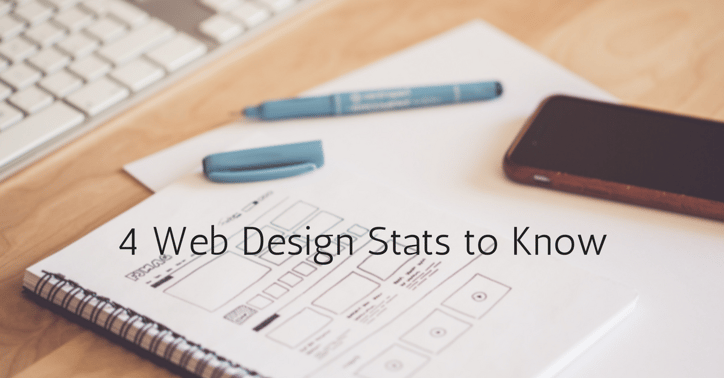The digital landscape is always changing, and staying on top of the latest trends is critical to developing and designing a site that performs. That’s why we’ve pulled a few impactful stats from around the web so you can get the most out of your next website redesign. Use these stats to make your brand’s digital experience better for your users, and you’ll increase your engagement and push closer to meeting your monthly quotas!

38% of people will stop engaging with a website if the content/layout is unattractive (Adobe)
The layout and general aesthetic is the first thing people see when they come to your site. Whether it’s on a mobile device, tablet, or desktop, it’s important to have a clean layout that allows users to easily digest the page’s content. Organized pages make it extremely easy for users to understand the purpose of the page and find the value you’re offering them.
If you fail to have a clean layout, users will simply find another website to find the information they’re looking for. Stick to a simple layout. Don’t clutter your pages with as much content as possible. Instead, focus on the high-impact items that bring the most value to the user. It’s essential to start with your users and their experience if you want to get them to interact in a certain way.
Once on a company’s homepages, 85% of visitors want to see information about that company’s products/services (KoMarketing)
Your homepage is likely the most trafficked page on your site. It sets the tone for your brand and should provide users with ample opportunity to dive deeper into your site. Your website is your biggest marketing asset, and your homepage should make it easy for users to understand what products or services you offer.
Does your homepage pass the 5 second test? In other words, if someone were to be shown your homepage for 5 seconds, would they be able to understand what you’re offering? If not, it might be a little too complex and could be causing an increase in your bounce rate.
45% of website visitors will leave a company’s website if there’s no contact information or phone number (KoMarketing)
Sticking with the trend of making your information accessible and easily digestible, users need to be given the option of taking the next step. In this case, it’s directly contacting your business. If you fail to provide your users with the ability to contact you, it establishes a brand image of a company that isn’t personable, and could be costing you leads.
Make sure it’s extremely easy for users to get in touch with you from your website. Users typically scroll to the bottom of the page to find contact info in the page footer. This is an easy and non-distracting way to give people that opportunity to reach out if need be.
Mobile devices now account for nearly 2 of 3 minutes spent online (comScore)
Not only are people using their mobile devices more and more, but Google now factors in your site’s mobile-friendliness into their ranking algorithm. If your site isn’t designed with a mobile first mentality, your organic traffic will suffer because of it. When you’re considering a website redesign, make sure you’re thinking of the millions of people searching for information from their smartphones.
A mobile first web design approach will allow you to connect and engage with people who are constantly on the move. Not only this, but millennials are increasingly searching for information “in the moment”. If your site isn’t properly laid out for mobile devices, they’ll quickly switch to another site and likely won’t come back.
What does this mean for your redesign?
If you’ve been through a website redesign before, you understand how stressful it can be to create a site that will perform for substantial amount of time. With updates to search algorithms and changes in user preferences, it’s hard to build a site that performs for a long period of time.
These stats reinforce the fact that you need to design around your user. If you fail to capture their attention and provide them with the value they’re looking for, they’ll have no problem looking elsewhere. This means adopting a mobile-first design approach. Even if you never view your site on a smartphone, you’re not designing it for you…it’s for your users.
Make it easy for them to browse your services and contact you with any questions, concerns, or opportunities they might have. The first step to designing for business growth is providing the opportunity for user feedback. This way, you can continuously learn and improve your site.
The website redesign process is extensive, and often comes with large investments and high risk for your business. At THAT Agency, we’re dedicated to providing you with a smarter web design process. We start by focusing on your business goals, aligning that with your users, and making improvements based on primary data collected directly from your site. If you need help building a website that performs sustainably, we’d love to talk and get a better understanding of what you have in mind for your new site.





.jpg)